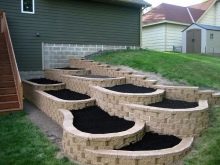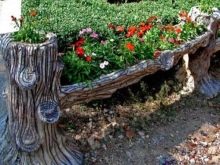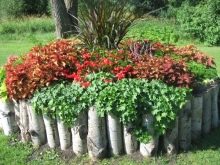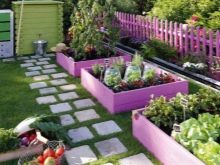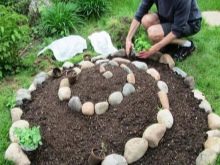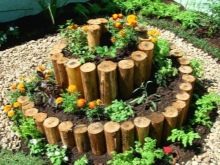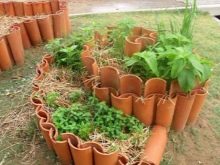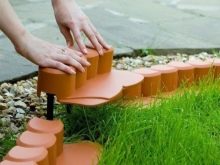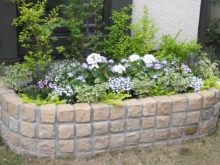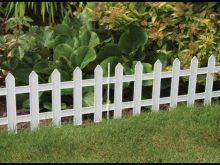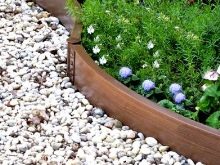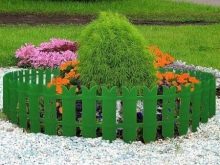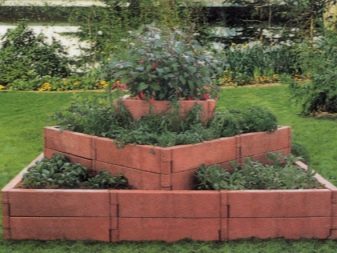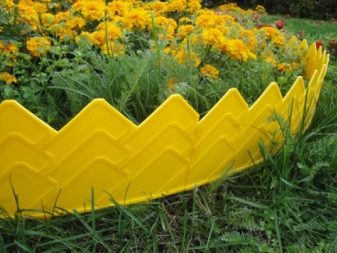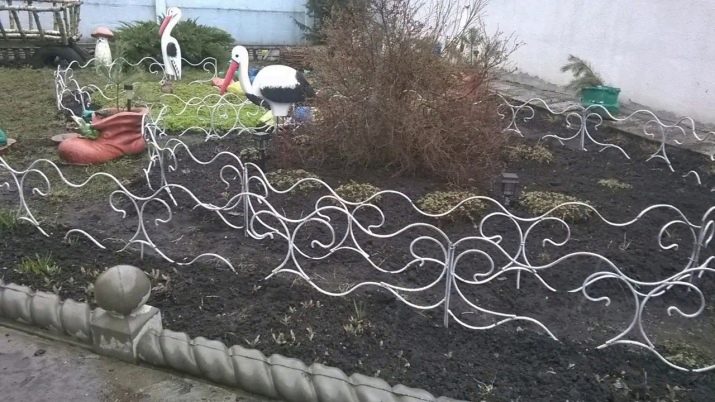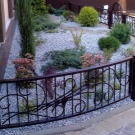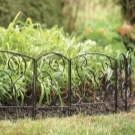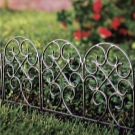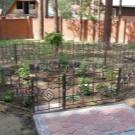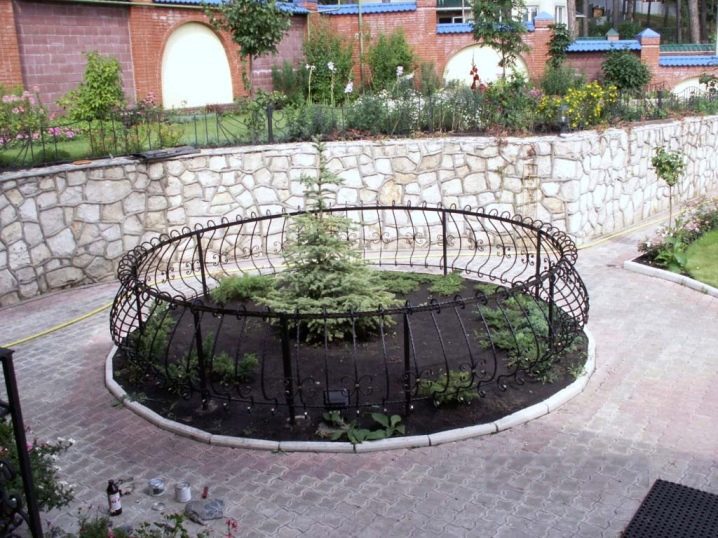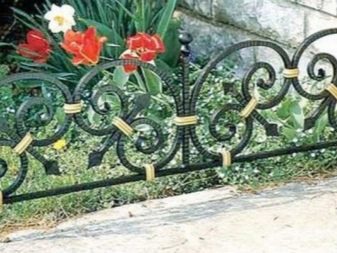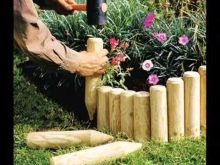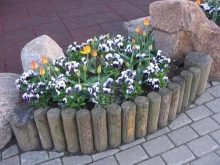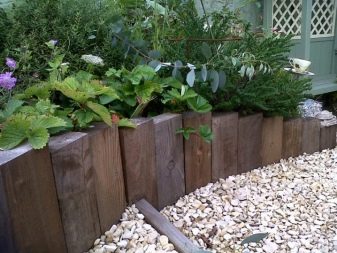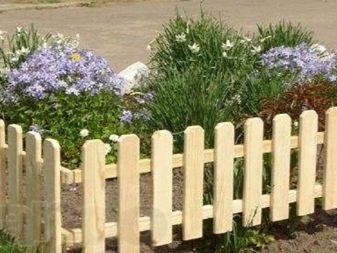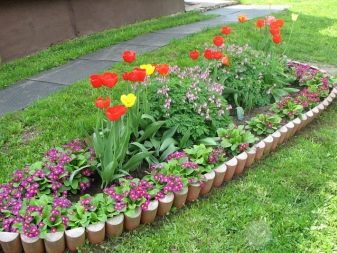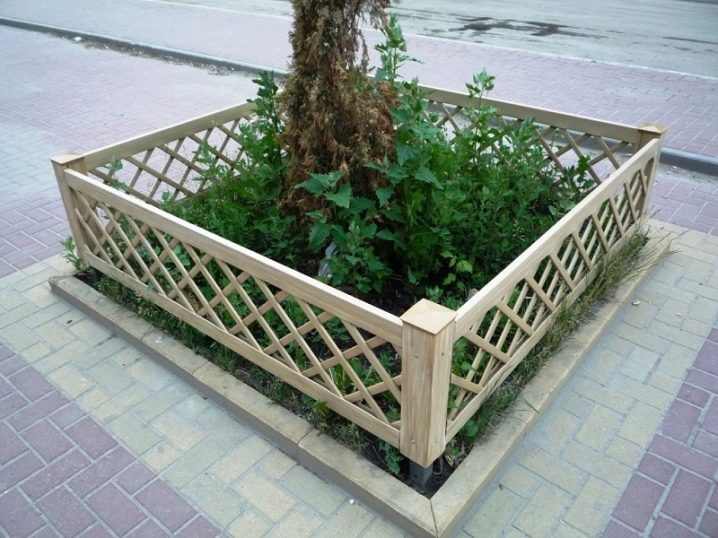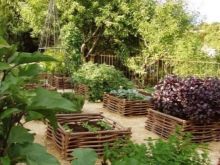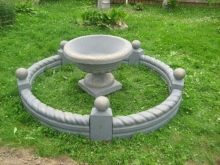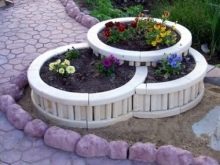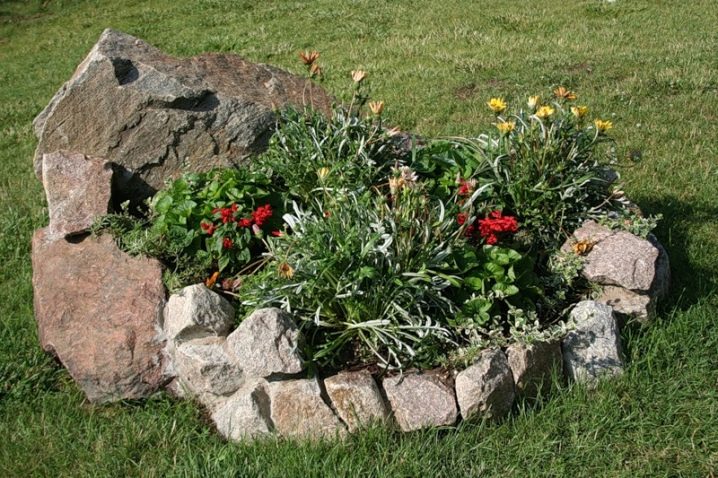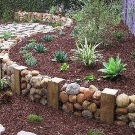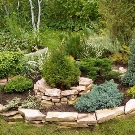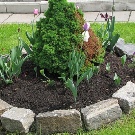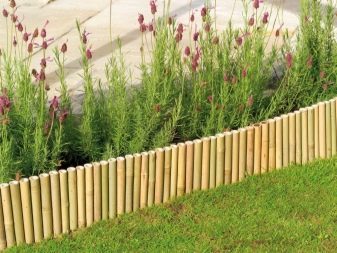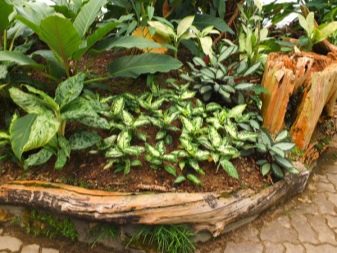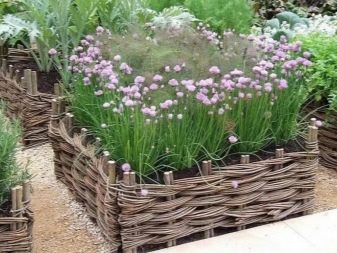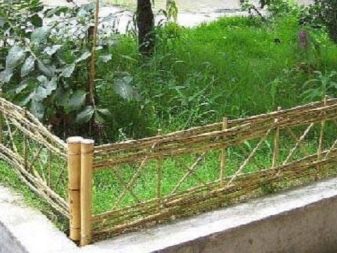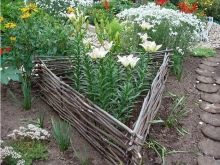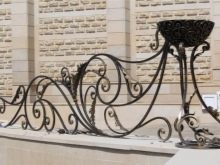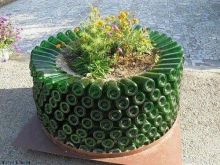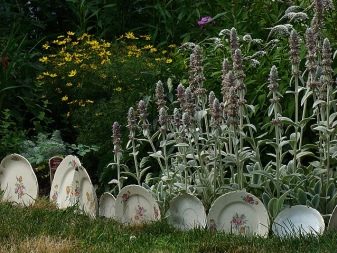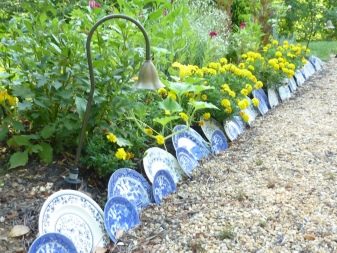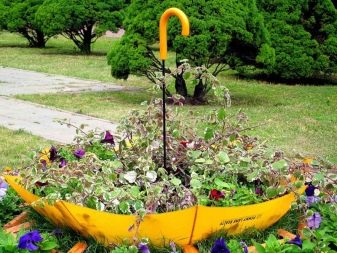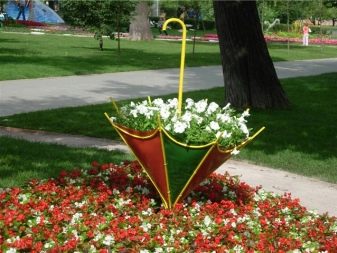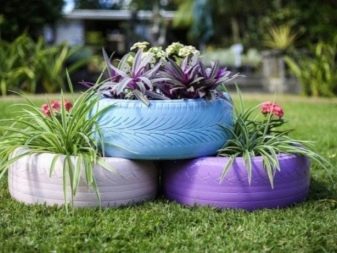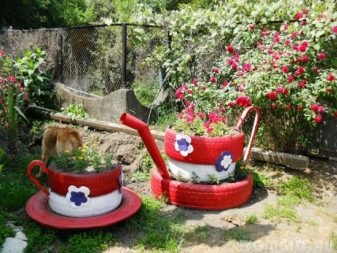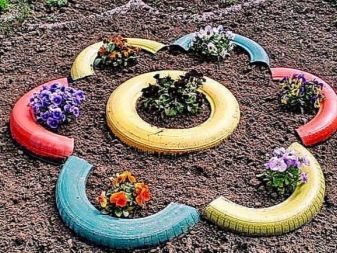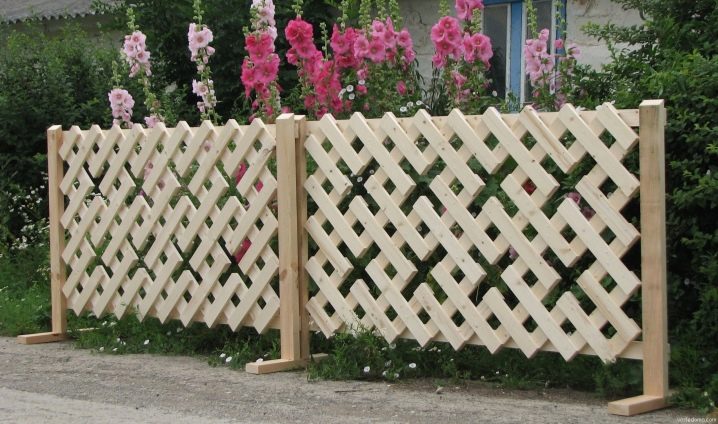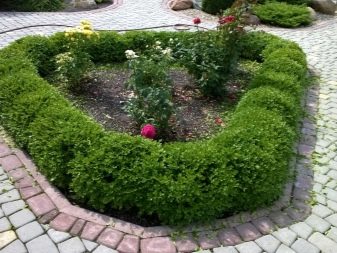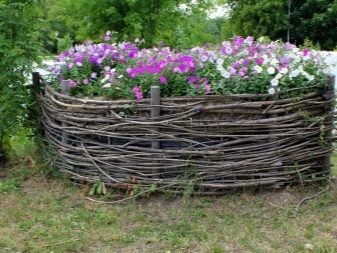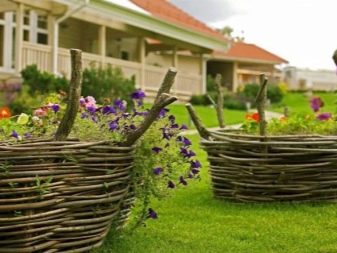Fences for flower beds: original ideas
Every gardener, responsibly approaching the organization of his plot, sooner or later faces the need to choose a garden fence. Thanks to them, the flower garden will have a well-groomed and tidy look, and a variety of modern solutions and materials will help to realize any, even the most bizarre, design idea.
Special features
Garden fences, in addition to a decent frame for the beds and flower beds, are a number of purely utilitarian tasks. In particular, they prevent the uncontrolled growth of perennial plants, zone the site and protect the flowers from trampling. When choosing a fence for flower beds, it is recommended to consider a number of factors.
First of all, this is a design concept: for the site to look beautiful and neat, all elements of the decor must be kept in the same style and not conflict with each other.
It should also take into account the features of the landscape and functionality. And not the last factor is the material and, accordingly, the price. The modern market offers a huge variety of options, and with fantasy and free time, a decent frame for flowerbeds can be made with your own hands.
Types: Pros and Cons
Types of fencing are traditionally divided by height and material used. Deciding what height to choose, you should focus on the functional purpose and type of plants. Obviously, low plants like viola, marigolds or pansies will favorably emphasize a small neat fence, and tall roses, peonies or dahlias will require a more substantial frame.
- In order to zoning a territory, creating a visual accent on a flower bed and separating it from a lawn or walkway, a small fence with a height of 5-7 centimeters is sufficient.
- The curbs are heavier and heavier and are made of more durable materials to prevent soil subsidence. The height of the border ranges from 10-15 centimeters.
- If the purpose of the fence is to prevent the growth of roots beyond the bed, the fence is made of durable materials - plastic and stone and deeply buried.
- A high fence - about half a meter - will reliably protect fragile plants from the invasion of children and animals, as well as help support tall plants and guide climbing trees.
- A good option to highlight the flower meadow will be a raised flowerbed. Its base is lined with brick or stone, due to which greater stability is achieved and sprinkling is prevented. Such a flower bed can stand for a long time, without requiring special renovation.
The choice of material for the manufacture of fencing is very important. There is a huge variety of options: from expensive spectacular to literally collected from auxiliary materials. What to prefer in each specific case depends only on the wishes and financial possibilities.
Plastic
Such fences are affordable, inexpensive and practical, durable enough and resistant to temperature fluctuations and moisture. Their undoubted advantage is also the ease of installation and disassembly, a variety of shapes, sizes and colors. Modern manufacturers are trying to please any, the most picky customer and produce plastic products not only in one color, but also with a gradient or intricate ornament, up to painting under wood, stone or marble.
Plastic fencing for flower beds are divided into curb ribbons and fences - sectional and decorative.
- Curb tapes are elastic plastic strips that allow you to freely frame the flowerbed of any shape and size. To do this, it is enough to dig out small grooves around the perimeter, lay the tape, sprinkle with soil and carefully tamp.
- Sectional fences have greater strength and stability due to their design: from the bottom, their sectors are equipped with pointed pegs for convenient driving into the ground. They are installed and slaughtered along the contour of the flower bed with a special rubber mallet. The main thing to pay attention to is that all sections are at the same level in height.
The disadvantages of plastic fencing include their susceptibility to mechanical deformation and often a cheap look. Despite the diversity of the range, it is not easy to pick up the parts so that they look serious and stylish.
Metallic
Cast iron and iron fences have always been considered the standard of style, strength and durability.
There are three types of such structures:
- forged;
- cast;
- welded.
Forged and cast are made to order and, as a rule, can boast a wealth of ornament, openwork and sophistication in the details. Such a fence looks stylish and expensive, fits perfectly into almost any design plan and, undoubtedly, will say about the good taste of its owner. Welded fences easier and cheaper. But they often look more rough due to the low plasticity of the material.
Separately, a combined view is distinguished, combining the elegance of wrought and solidity of a welded one. However, a welded fence can be made with your own hands. To do this, you need to have only a trim pipe, welding machine and the layout of the desired result. Welded design allows you to create only the simplest geometric patterns without any frills. Usually, along the perimeter, the beds are dug out a trench, they are poured with concrete and stick pins, to which the fencing elements are welded.
Like all metal products, such barriers can suffer from rust, and therefore require some maintenance. They must be regularly treated with special anti-corrosion compounds and painted with specific paints.At observance of simple rules of operation the metal fence will serve for many years.
In addition to the need for regular renovation, an extremely high price may also be a possible disadvantage when purchasing a metal fence.
Wood
The fences are natural and close to nature, and therefore fit perfectly into any landscape plan. The tree is associated with comfort and warmth, moreover, it does not heat up and does not reflect the glare of the sun, which means it will not damage the leaves and the stems of the plants. Another advantage is environmental friendliness and ease of disposal. The finished product can be purchased at the store or create it yourself.
For the fence, you can use any type of wood. The material is quite simple to process and does not require any complicated tools and skills, so you can make a fence from it yourself.
To do this, you can use boards, lining, picket fence, timber, logs, slab and any other variations depending on the stylistic decision of the garden. For example, an fence of equal size creates a smooth geometric contours and rigor of design, and the slab or cuts will add notes of asymmetry and modernity due to the individual shape of each element.Heavyweight timber looks brutal and monolithic, and lightweight fence will give grace and charm.
There are several types of wood fences:
- simple paling;
- small chumps;
- log curb;
- shtaketnik of simple or carved slats;
- mosaic of pieces of transverse saw cut;
- fence from logs;
- weaving from a rod or branches.
The simplest to manufacture is the curb, assembled from small wooden chocks.
At the beginning of work, logs of approximately equal diameter are selected, from which chumps are made, the length of which is calculated according to the scheme: the required height plus twenty centimeters for dropping. Next, the wood is cleared of bark and treated with special antiseptic solutions to prevent rot and destruction. Some additionally wrap the bottom of the chumps with ruberoid to prevent the ingress of moisture. After that, it remains only to bury the logs around the flower beds to a depth of about twenty centimeters, sprinkle with soil and thoroughly rammed.
The shortcomings of using wood fences primarily include the fragility of the material.It is vulnerable to excessive moisture and drying, may rot or be eaten by bugs.
It is possible to prolong the life of a wooden fence by treating the product with special solutions and regularly updating the paintwork. Requires periodic maintenance, renovation and attention.
Wicker fences are a kind of wooden. They look consistently stylish, cozy and lamp-like, adding to the design of the garden pastoral rural colors. In addition, woven fences perfectly keep their shape, do not allow flowers to grow beyond the limits of the flowerbeds, and in winter they keep the snow, protecting the plants from freezing.
You can weave a fence with your own handsTrue, this exercise will take time and a certain skill. Some craftsmen craft even complex patterns from the vine, which look extremely attractive and stylish. Willow twigs need to be harvested in early spring, when the branches are flexible, thin and bend easily. The bark is removed from the trimmed branches and trimmed to one size so that the fence looks neat.
The process of forming a fence is simple. Along the perimeter of the planned flower bed, carrying pegs are installed, and the closer they are to each other, the stronger the construction will be.The end of the rod is attached to the peg with carnations or metal clips, after which they lead a line, passing it before, then behind the support post. Every few layers knock with a mallet so that the twigs lay more tightly.
Concrete
Concrete fences are deservedly renowned for their practicality and reliability. The material has a high degree of strength, tolerates high temperature fluctuations, is not afraid of exposure to water and sun. All care for such fencing comes down to the need for regular cosmetic tinting. The disadvantages include stillness of such structures. Once established, the boundaries of the flower bed cannot be moved or moved, which the conservatives will undoubtedly like, but it may not appeal to fans of changes and rearrangements.
It is possible to fence a flower bed with a concrete border independently. To begin with, outline the contour and dig a groove about 10 centimeters wide, and about 20 feet deep. You can fill up the bottom of the groove with rubble or trample down it carefully. Then wooden bars are driven into the ground, to which a flexible tape made of hardboard or fiberboard is fastened, transverse struts are installed through each meter. In the resulting trench is poured cement mortar of medium thickness and carefully leveled.
When the concrete dries, the surface is ground and covered with sealant. After a few days, the structure will finally dry out and form, and you can transfer it to the sod layer. As a decoration, an intricate mosaic of multi-colored pebbles, seashells, glass fragments or bottle necks can be laid out on the surface of the still-frozen concrete.
From stone and brick
These materials make beautiful and original fences. The structure of the stone, its inviolability and hardness complement and highlight the fragility and elegance of plants. Such a composition is akin to a mini-landscape, where a stone can serve as a weighting element in the style of a severe Russian forest, as well as lightening and raising a flowerbed due to harmoniously selected combinations.
The main rocks used in landscape design are limestone, slate, sandstone, granite and volcanic tuff. When selecting a stone, one should keep in mind its physical and chemical properties. Some rocks, such as limestone and sandstone, have a soft porous structure, which makes it easy to process them with improvised means.On the other hand, over time, the breed can latch on to the ground, so it’s worth being careful not to plant plants that prefer acidic soil with such material.
When creating a fence, two types of masonry are applied - dry and wet.
The secret of dry masonry lies in the fact that large bulk stones are quite capable of lying on the ground on their own, without requiring additional support. Therefore, they are simply laid along the contour of the flower beds, sometimes for fidelity by dropping lower ones. Wet masonry is shown primarily small or prone to scattering stones. Such materials are firmly fixed on a concrete base. A variant of fencing of pebbles and small stones can also be a gabion - a thick metal mesh in which a stone base is laid in rows.
Curbstone can be of any shape, color and size in accordance with the concept of fencing. Compositions from both rounded and flat elements look good. An interesting and bright chip can be a luminescent paint coating. Accumulating the energy of the sun per day, stones emit a soft mysterious light at dusk.
The brick looks less organically than the stone, bringing a clear anthropogenic note to the decor. However, made in the same style, such fences look neat and at home, creating an image of cozy rural land. By cons of the material should be attributed to the high energy consumption of the process of laying. To look attractive, the bricks must lie flat, not have obvious scratches and chips.
Brick fences are laid out both in a dry way - with a wide side down and wet - on a cement mortar. When laying bricks on the edge to create a geometric pattern, you should align the top of the cord stretched over the place of work.
Original options for fencing can be obtained using non-standard materials, such as bamboo or rope.
Rope fences are rather decorative because they are not designed for heavy loads. To make them is quite simple. It is enough to mark the necessary territory with support posts and tie up with a string. A slightly sagging, loose-fitting rope looks better.
Looks stylish and fence from bamboo, giving the garden a light oriental flavor.You can use bamboo pegs of equal length or give them some asymmetry. A ready-made roll of connected bamboo stems will be a convenient option, which is enough to rest on the posts and to dig in a little
An interesting discovery of naturalistic advocates is the framing of flowerbeds with tree snags. Like wood, such material needs antiseptic processing and dyeing or varnishing.
A good replacement for the fence will be buying a finished pot. The product can be selected for the finished style or order an individual design. The flowerpot can be freely rearranged on the territory, it is easy to clean as unnecessary or return to the place.
How to choose?
The choice of the appropriate type of fence depends on a number of factors. First of all, you should decide on the functions assigned to the fence. Is it necessary to take a fence only for a while in order to maintain and restrict the flower bed, or the site owner is interested in a practical long-term investment. And if in the first case we can restrict ourselves to a simple fence made of scrap materials, then the second requires more detailed consideration.
Obviously, when choosing a fence for flower beds should focus on the overall design of the garden.
The plot in a rustic style will be decorated with lovely wicker and decorative wooden fences that will perfectly fit into the composition with cozy benches, sandy paths and lush lawns. Brick and geometric metal edging of flower beds and paths will perfectly fit into modern, characterizing its owner as a modern and practical person. Openwork forged grids can not only protect plants, but also bring notes of a romantic retro. Monumentality of concrete appeals to the severity of classicism, and the apparent simplicity of the stone hides the infinite scope for creativity and relaxation. Do not forget about the practical universal plastic, which has sufficient resources to fit into any design.
An important point when choosing is the price, which, depending on the material, can reach transcendental heights or get along practically free of charge. Before you mark the beds on the site, you should determine the budget and get acquainted with the market and manufacturers.It will be useful before buying or ordering to read reviews on the product of interest in order to avoid unpleasant moments afterwards.
From scrap materials
If desired, and the availability of free time stylish and original fence can be made with your own hands. The fantasy of gardeners truly knows no limits, and the choice of materials from which craftsmen make fences only confirms this.
A creative way out is bottle fencing. It is better to choose plastic bottles of dark color, since they are more practical, but it is possible to use glass containers. Bottles are cleaned of labels and filled with filler for greater stability - most often it is earth, sand or small pebbles. After that, it remains only to bury them half to the ground bottom up. Despite the clumsy material, such a frame looks quite interesting.
The border of vinyl records or porcelain plates half dug into the ground looks unusual. The only bright minus can be considered only the fragility of the elements used. Unexpectedly and vividly, the use as fences and flowerpots, seemingly not intended for this object, looks.For example, an umbrella.
Fences from old car tires are also popular.
Rubber is practical, durable and moisture resistant, which makes the material very comfortable for the garden.
You can paint or somehow decorate the tire and make it a comfortable pot. Moreover, it is possible both to dug in the ground options, and standing on a stand. Or, if there are many tires, an original border is often made of them along a flower bed or path.
Interesting examples
The decorative fence of wooden dies with geometric patterns will also look original. A light tree will stand out wonderfully against the background of bushes of bright colors. The fence is not necessary to dig into the ground, because it stands firmly on a flat support. Such a fence is conveniently transported from place to place as needed.
Skillful gardeners can try growing a hedge from low bushes in a flowerbed. Such bushes are planted on the perimeter at an equal distance from each other. When the vegetation reaches the desired height, the green fence is cut to give it the necessary shape, and flowers are planted inside such an original flowerbed.It looks always beautiful and fresh, especially against the background of a sidewalk of pebbles. That's just to create and maintain such a masterpiece takes a lot of time and effort.
Extraordinarily spectacular and decorative vases woven with willow vines. Deliberately rough structure of twigs plays in contrast with the lush air filling, and the poverty of the tones of the braid emphasizes the tones of the plants, accentuating and romanticizing the flower bed. This design looks like a basket of flowers, forgotten in a meadow of a timid girl of the age of sentimentalism.
You can learn how to make fences with your own hands by watching the following video.



